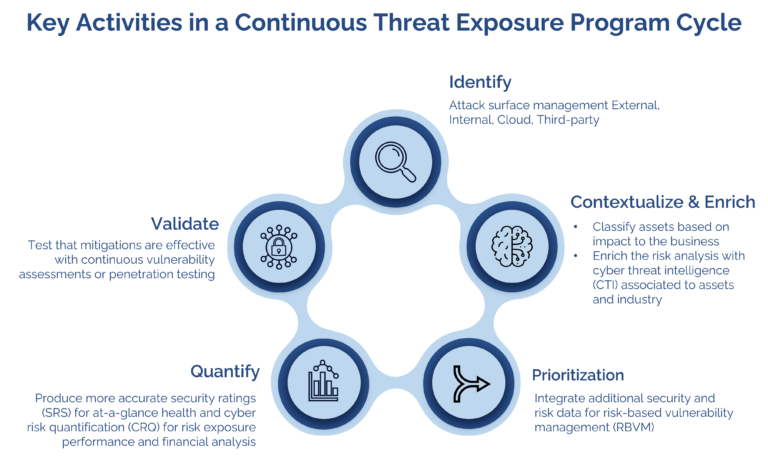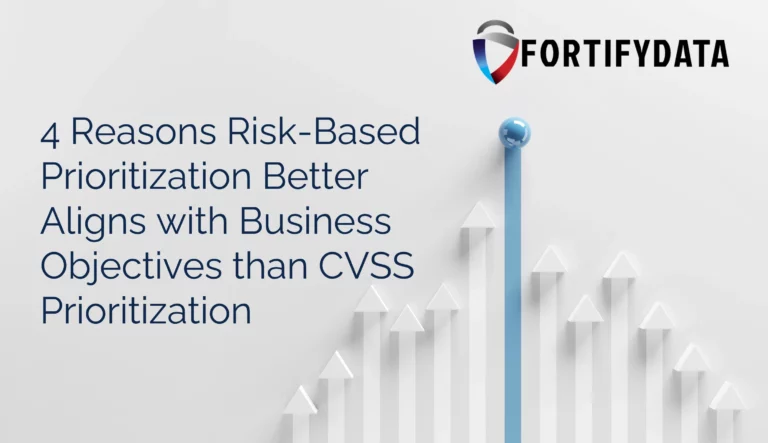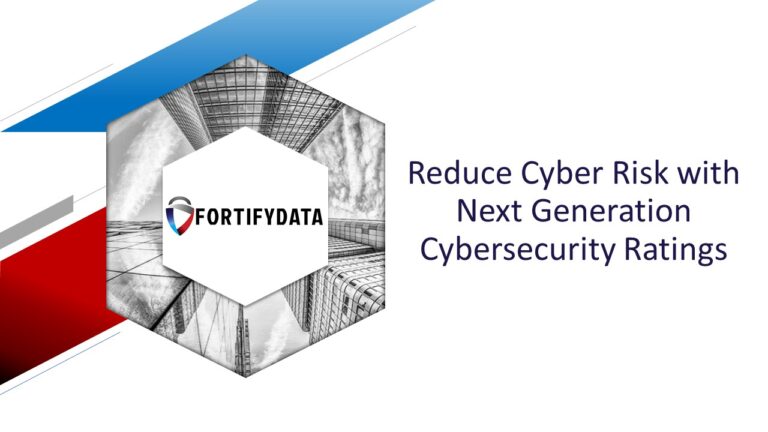
Continuous Threat Exposure Management – The 6 Aspects You’ll Need to Address Continuous Threat Exposure Management (CTEM) is an…
"This is an excellent starting point for any organization that wants to get serious about their cyber risk management. The system has the capability to grow as you become more sophisticated in your use"
IT Director
Services Industry
In today’s interconnected digital landscape, where cybersecurity threats lurk at every corner of the virtual realm, organizations are relentlessly seeking innovative ways to fortify their defenses. One such innovation that has gained substantial momentum is the use of contextualized-based security ratings. These ratings offer a more accurate and comprehensive assessment of an organization’s security posture by incorporating asset classification details, threat likelihood contexts, and more. Let’s delve into this concept to understand why context is the key to achieving better accuracy in security ratings.
Security ratings without context often provide a one-size-fits-all approach to evaluating an organization’s security posture. How are security ratings created? These ratings typically rely on a combination of external data points, vulnerability scans, and other factors to generate an overall score. While this approach offers a quick snapshot of an organization’s security, it often lacks the depth and nuance required to make informed decisions. It fails to consider critical contextual information that can significantly impact an organization’s risk exposure.

Asset Classification: Every organization possesses a diverse range of assets, each with varying levels of criticality. A laptop in the HR department, for example, might not hold the same value as a server containing sensitive customer data. Contextualized ratings take asset classification into account, acknowledging that not all vulnerabilities carry the same weight. By understanding the importance of different assets, organizations can prioritize remediation efforts more effectively.
Threat Likelihood Context: Assessing vulnerabilities in isolation often leads to an incomplete picture of an organization’s risk landscape. Contextualized ratings consider the likelihood of actual threats exploiting these vulnerabilities. This involves evaluating factors such as historical attack patterns, industry trends, and the presence of mitigating controls. By factoring in threat likelihood, security teams can allocate resources more efficiently to address the most imminent risks.
Additional Relevant Information: Contextualized-based security ratings go beyond just vulnerability data. They incorporate additional contextual information, such as the organization’s security policies, incident response capabilities, and historical breach data. These elements provide a more holistic view of an organization’s overall security readiness.
Additional Resources
Cybersecurity rating scale explained
What are security ratings used for?
How are security ratings created?
What is a good cybersecurity rating?
How do you improve your security rating?
Is it easy to switch security ratings providers?
Why is my security rating wrong?
What Kind of Company is BitSight?
Select What are the 5 C’s of Cybersecurity?
What is the Highest Security Rating?
What is the difference between SecurityScorecard and BitSight?
The Evolution of Cybersecurity Ratings and How They Can Boost Risk Visibility

As cyber threats continue to evolve, the need for accurate and context-driven security ratings becomes increasingly evident. Organizations must move beyond the limitations of traditional ratings and embrace a more nuanced approach that takes into account asset classification, threat likelihood, and relevant contextual information. By doing so, they can enhance their security defenses, make informed decisions, and navigate the intricate landscape of digital security with confidence. Contextualized-based security ratings offer not only a glimpse into an organization’s vulnerabilities but also a path toward fortified cyber resilience.
Get a complimentary security rating from FortifyData where your context can be represented.



| Cookie | Duration | Description |
|---|---|---|
| cookielawinfo-checkbox-analytics | 11 months | This cookie is set by GDPR Cookie Consent plugin. The cookie is used to store the user consent for the cookies in the category "Analytics". |
| cookielawinfo-checkbox-functional | 11 months | The cookie is set by GDPR cookie consent to record the user consent for the cookies in the category "Functional". |
| cookielawinfo-checkbox-necessary | 11 months | This cookie is set by GDPR Cookie Consent plugin. The cookies is used to store the user consent for the cookies in the category "Necessary". |
| cookielawinfo-checkbox-others | 11 months | This cookie is set by GDPR Cookie Consent plugin. The cookie is used to store the user consent for the cookies in the category "Other. |
| cookielawinfo-checkbox-performance | 11 months | This cookie is set by GDPR Cookie Consent plugin. The cookie is used to store the user consent for the cookies in the category "Performance". |
| viewed_cookie_policy | 11 months | The cookie is set by the GDPR Cookie Consent plugin and is used to store whether or not user has consented to the use of cookies. It does not store any personal data. |